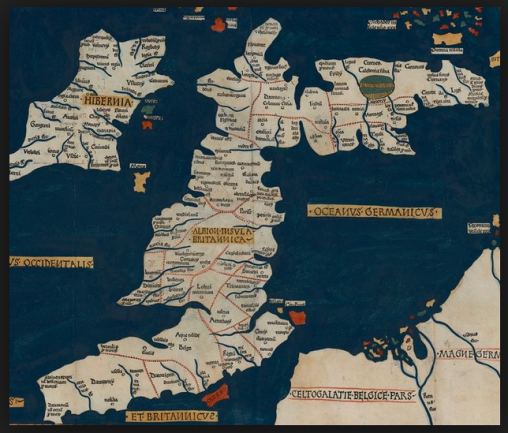This blog has now succeeded in solving a number of historical puzzles to the complete satisfaction of absolutely no-one.
1. Asser’s Arx Cynuit: not Countisbury (scholars), and certainly not the west coast of Devon (romantics). The height of the sheer north Devon cliffs seemed to preclude either landing ships or climbing to reach the supposed encampment at Countisbury; and there is no early evidence of any kind for the area around Appledore, favoured as it is by its local historians – and promoted by antiquarians. More likely than either of these is the area to the east of Countisbury, where there are no cliffs, where there were several, well-attested Viking attacks and where there were richer pickings for lightning raiders. Likelihood 7/10. However, if the Danes had landed here, might they have chased the thegns for ten miles along the north Devon coast to Countisbury? If so, one thing that could support Countisbury is the very fact that the camp was remote, probably abandoned, and thus a refuge of last resort and a good place to besiege trapped enemies. (A hypothesis that the arx itself might have been at Watersmeet was ‘proposed, considered and finally rejected’.)
2. Ptolemy’s Iscalis: not Charterhouse-on-Mendip (scholars), the centre of the Roman lead-mining industry, but somewhere to the south west, near the mouth of the river Parrett – a noteably watery region – where there are plentiful signs of Roman settlement and a salt-mining industry. It is conveniently placed with Roman ports at Combwich and Crandon Bridge. All that’s missing is any sign of a town comparable in size to Charterhouse, though much is possibly hidden beneath the M5.

The main Roman settlement is underneath the M5 interchange, 2km from the Roman port at Crandon Bridge
There are also signs of early British settlement (the lake village at West Huntspill, for example) which could explain why, according to Ptolemy, it was made a tribal centre in the Roman era. Likelihood 7/10.
3. The Antonine Itinerary’s Traiectus: not Bitton (thus scholars and just about everyone else), but slightly further west in the area south from Willsbridge, over to Keynsham on the other side of the Avon. There are abundant Roman remains at Keynsham and a ‘traiectus’, over the river from the Abona to Aquae Sulis Roman road. A north-south Roman road meeting the east-west road, for which there is slight evidence, would strengthen the case. Likelihood 8/10
4. And, right at the beginning, there was King Alfred’s æstel. The scholars are agreed it was a stick, or pointer, used by Saxon monks to keep their place when reading their manuscripts, to follow the text as they read it; and that the Alfred Jewel and a few similar artefacts were fixed to the top of such æstels. The drawback is that, although such sticks, or pointers, ought to exist, there seems no evidence that they actually did. Where are they mentioned? Where are they depicted in illuminations of monks reading their manuscripts? So, not a reader’s stick or pointer; but an alternative suggestion is that the jewels were fixed to the top of bookmarks, which, as Alfred directed, were to be kept in the bound volumes. The Latin translation indicatorium could as easily indicate a page or opening in the manuscript, rather than the exact place on the page. Likelihood 4/10
Done. So where next?













You must be logged in to post a comment.